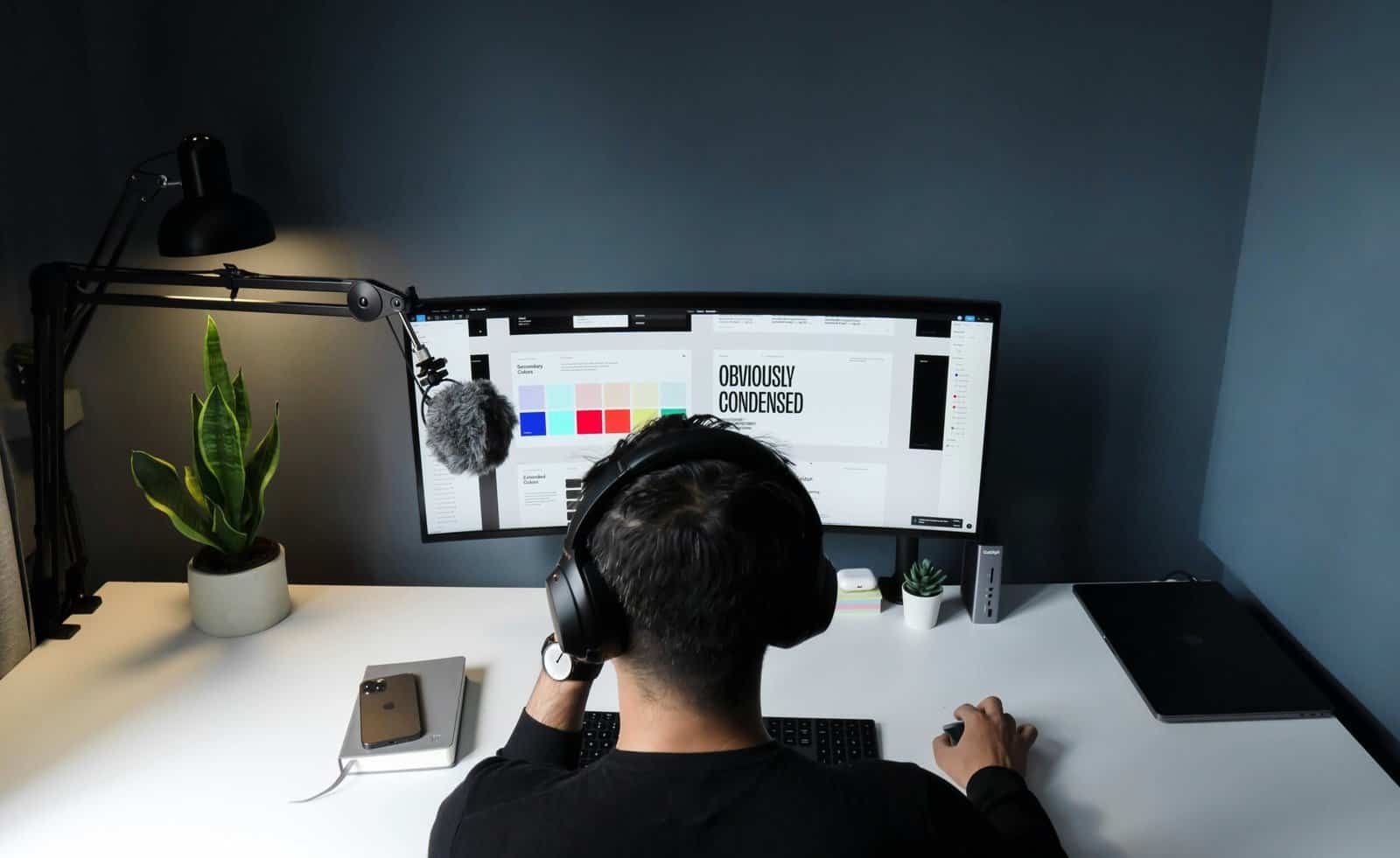Are you wondering how to get started freelancing when you have no experience and no client work to show?

How Do I Start Freelancing With No Experience?
You can start freelancing even if you have zero paid experience right now. This guide walks you through mindset, skill selection, building a portfolio, finding your first clients, pricing, legal basics, tools, and a 30-day action plan to land that initial gig.
Why freelancing with no experience is realistic
Many clients care more about results, clear communication, and reliability than a long resume. If you can solve a problem for someone, demonstrate your ability, and deliver reliably, you can win work.
Set the right mindset and expectations
Starting without experience requires patience, consistent effort, and experimentation. Expect a learning curve, early rejections, and the need to iterate on your approach until you find what works.
Identify marketable skills you can start with
You don’t need to be an expert to begin — you need a marketable skill and a way to prove it. Below are common entry-level freelance skills and what makes them accessible.
Quick skill list to consider
These are fast to learn or often already in your toolkit: content writing, proofreading, social media management, basic graphic design (Canva), simple website edits (WordPress), data entry, virtual assistance, transcription, basic video editing, and research.
Skill comparison table
| Skill category | Typical entry barrier | Time to become competent | Demand level (general) |
|---|---|---|---|
| Content writing | Low | 1–3 months practice | High |
| Proofreading/editing | Low | Few weeks | Medium |
| Social media management | Low–Medium | 1–3 months | High |
| Graphic design (basic) | Medium | 1–4 months | High |
| WordPress/site edits | Medium | 1–3 months | High |
| Virtual assistance | Low | Few weeks | Medium |
| Transcription | Low | Few weeks | Medium |
| Video editing (basic) | Medium–High | 2–6 months | Growing |
Use the table to decide where you can get comfortable quickly while matching your interest.

Learn and build skills quickly
You can accelerate learning with structured resources and practice. Use short courses, YouTube tutorials, guided projects, and weekly practice goals. Focus on practical tasks you’ll perform as a freelancer.
Learning methods that work
Mix formal courses, hands-on projects, and small paid or unpaid tasks. Take micro-projects to build confidence and a reviewable result. Action beats passive learning.
Build a portfolio when you have no paid work
A portfolio is proof of what you can do — it doesn’t need to be paid work to be convincing. You can create spec projects, case studies of personal projects, volunteer work, sample deliverables, or before/after examples.
Portfolio types and examples
| Portfolio type | What it shows | How to create |
|---|---|---|
| Spec work | Your approach and style | Recreate a campaign, write sample articles, redesign a mock site |
| Personal projects | End-to-end work | Build a blog, create social posts for a hobby brand |
| Volunteer/discounted work | Real client experience | Offer a local NGO or friend a discounted project |
| Case study | Process and results | Document problem → approach → result (even simulated metrics) |
| Collections (samples) | Range and quality | 5–10 varied samples with short captions |
Write short captions for every sample that explain the goal, your approach, and the result to help prospects judge your thinking.

Choose a profitable niche
Narrowing your focus helps you stand out and attract higher-value clients. Your niche can be an industry (e.g., real estate, SaaS) or a specific service for a specific audience (e.g., blog writing for fintech startups).
Why a niche matters
When you target a niche you can tailor your messaging, become more confident pitching, and increase perceived value. Clients prefer specialists who understand their business.
Niche selection checklist
- Do you understand the problems this niche faces?
- Is the niche big enough to find multiple clients?
- Can you build sample work that speaks directly to this niche?
- Are there online communities or platforms where these clients gather?
Decide the services you’ll offer and how to price them
Start with a clear, narrow service offering. Decide whether you’ll charge hourly, per-project, or offer packages/retainers.
Pricing strategies for beginners
- Intro hourly: Low rate to win early projects, raise after a few solid reviews.
- Fixed project price: Easier for clients to approve and helps you deliver efficient work.
- Packages: Combine deliverables at set prices to simplify buying decisions.
Sample beginner pricing table (adjust to your local market)
| Service | Suggested beginner price (USD) | Pricing model |
|---|---|---|
| Blog post (800–1,200 words) | $25–$75 | Per article |
| Social media graphics (per post) | $5–$25 | Per post |
| Simple WordPress page | $50–$200 | Fixed project |
| Virtual assistant (hour) | $8–$25 | Hourly |
| Proofreading (per 1,000 words) | $5–$30 | Per 1,000 words |
| Basic logo (Canva-style) | $20–$100 | Fixed project |
| Basic video edit (1–3 min) | $25–$150 | Per video |
Start conservatively and raise prices as you gain testimonials and faster delivery times.

Create profiles and optimize your online presence
A few targeted profiles can help you get your first clients. You don’t need to be everywhere; pick 1–3 platforms where your target clients hang out.
Platforms comparison table
| Platform | Best for | Pros | Cons |
|---|---|---|---|
| Upwork | General freelancing | Large client base, escrow | High competition, fees |
| Fiverr | Task-based services | Good for packaged gigs | Race to the bottom on price |
| B2B, professional services | Networking, inbound leads | Requires time to build cred | |
| Behance/Dribbble | Designers | Visual portfolio exposure | Mostly design-focused |
| PeoplePerHour | Small projects | Mid-competition | Variable client quality |
| Local Facebook groups/Nextdoor | Local services | Easy local leads | Less scalable |
Optimize your profiles with a clear headline, a short value-driven bio, 3–5 portfolio samples, and a short FAQ or service description that answers common client questions.
Write winning proposals and pitches
A proposal is your chance to persuade a client you understand their problem and can solve it. Focus on their needs, your approach, and clear next steps.
Proposal structure that converts
- Quick greeting and one-line summary of what you’ll deliver.
- Short paragraph that shows you understand the client’s problem.
- Proposed solution with steps and timeline.
- Price and what’s included.
- Call to action (ask a question, suggest a call).
Sample brief proposal (you can adapt)
Hello [Client Name],
I can help [brief summary of problem]. I would [short summary of approach]. This will include [deliverable 1], [deliverable 2], and [deliverable 3] over [timeline]. My fee is [price]. Would you like to schedule a 15-minute call to confirm details?
Make the first two lines strong and specific to the client’s posting or website to show attention.

Get your first clients: practical tactics
You can find your first clients through platform bidding, targeted cold outreach, networking, local businesses, and content marketing. Early clients often come from outreach and micro-projects.
First-client strategies
- Bid selectively on freelance platforms with tailored proposals.
- Offer a risk-reducing first project (small, low cost, satisfaction guarantee).
- Reach out to local small businesses with a simple audit and offer.
- Use LinkedIn: connect with decision-makers and send a concise value message.
- Post sample work in relevant groups and tag potential clients.
Cold outreach template
Subject: Quick idea to [improve metric] for [company name]
Hi [Name],
I saw [specific observation about their site/social]. I can help [brief, specific result]. For example, I would [one-sentence strategy]. If you’re open, I can do a short audit and propose a 1–2 week plan. Would you be interested?
Keep follow-ups simple: 2–3 follow-ups spaced a few days apart, each adding a tiny piece of value (a helpful link, a micro-audit point).
Deliver exceptional first projects and earn testimonials
Your early priority is creating outcomes clients will share about. Communicate clearly, set expectations, meet deadlines, and overdeliver slightly on value.
How to get a testimonial
- Ask for feedback midway to ensure satisfaction.
- Deliver a clear summary of results and impact.
- Request a short testimonial and permission to publish the work.
- Offer a small discount on future work in exchange for a case study if appropriate.
Contracts, scope, and revisions
Use a simple contract even for small jobs to avoid misunderstandings. Define scope, deliverables, timeline, payment terms, and revision limits.
Simple contract essentials
- Client and freelancer names and contact info
- Scope of work with deliverables
- Timeline and milestones
- Payment amount, method, and schedule
- Revision policy and extra-fee structure
- Confidentiality and ownership of work
- Cancellation terms
Handling payments and invoicing
Pick payment methods that are convenient and trusted: PayPal, Stripe, Wise, bank transfer. Use simple invoice templates and send invoices immediately after delivery or at agreed milestones.
Invoicing tips
- Use clear invoice numbers and due dates.
- Include payment options and late payment terms.
- Consider using basic invoicing tools (examples below) for tracking and reminders.
Legal and tax basics for beginners
You should track earnings and expenses from day one. Understand whether you need to register a business in your country and how to pay taxes on freelance income.
Recordkeeping essentials
- Keep copies of invoices, receipts, and contracts.
- Save bank statements and payment confirmations.
- Track expenses (software, subscriptions, equipment) for deductions.
If uncertain, consult a local accountant about registration, tax rates, and deductible expenses.
Tools to run your freelance business
Tools help you manage projects, communicate, invoice, and build your portfolio. Start simple and add tools as needed.
Recommended tools table
| Purpose | Tool examples | Why use them |
|---|---|---|
| Portfolio/website | Wix, Squarespace, GitHub Pages | Easy to present samples |
| Proposals | Google Docs, Notion, Bidsketch | Reusable templates |
| Project management | Trello, Asana, ClickUp | Keep tasks and timelines clear |
| Communication | Gmail, Slack, Zoom | Professional client communication |
| Invoicing/payments | Wave, PayPal, Stripe, QuickBooks | Simplify billing and tracking |
| Design | Canva, Figma, Adobe Express | Fast visuals for non-designers |
| Time tracking | Toggl, Clockify | Bill hours accurately |
| Contracts | HelloSign, Docracy, PDF templates | Simple signing and recordkeeping |
Build credibility fast using low-cost tactics
You can build trust quickly without a large portfolio. Use case studies, short videos explaining your process, a strong LinkedIn profile, and testimonials from any meaningful work (volunteer or spec).
Credibility checklist
- Clean, readable portfolio with 5 strong samples
- Short case study for at least one sample
- Professional profile photo and bio
- Client testimonials or references
- A guarantee or clear refund/revision policy
Scale your freelancing beyond one-off projects
Once you have repeatable processes and some steady clients, you can scale. Options include raising rates, offering retainers, productizing services, or subcontracting.
Ways to scale
- Offer monthly retainers for ongoing work (social media, content).
- Create packaged offerings (e.g., 4 blog posts + SEO checklist a month).
- Hire other freelancers for overflow work and take a project management fee.
- Build passive income products (templates, courses) aligned with your service.
Common mistakes to avoid
Avoid these traps early so you don’t burn out or miss growth opportunities.
- Undercharging and never raising prices
- Trying to be everything to everyone
- Not using contracts or clear scope
- Ignoring client communication or deadlines
- Working without tracking time and expenses
30-day action plan to get your first client
A focused plan helps you move from zero to paid work quickly. Here’s a week-by-week breakdown.
Week 1: Decide your skill, niche, and offerings
- Choose one marketable skill you can deliver reliably.
- Pick a specific niche and 1–3 services.
- Create a simple pricing list and service descriptions.
Week 2: Build a lean portfolio and profiles
- Create 3–5 sample pieces (spec work, personal project, volunteer work).
- Build profiles on 1–2 platforms (Upwork, LinkedIn).
- Write a short, client-focused bio and headline.
Week 3: Pitch and outreach
- Apply to 10 highly relevant job posts with tailored proposals.
- Send 20 targeted cold outreach messages (local businesses or LinkedIn).
- Post your best sample on social media and relevant groups.
Week 4: Follow up, close, and deliver
- Follow up on all proposals after 3–5 days.
- Offer a low-risk small pilot project to hesitant prospects.
- If you win work, deliver on time, get feedback, and ask for a testimonial.
Consistency and persistence during these 30 days are more important than perfection.
Templates and quick scripts
Keep templates to save time and ensure consistency. Below are compact templates you can adapt.
Short cold email script
Subject: Quick idea to improve [specific page/metric]
Hi [Name],
I noticed [observation]. I can help by [one-sentence solution]. I can audit [page/social] and send a 1–page plan for free — would you like that?
Quick follow-up script
Hi [Name],
Just checking in on my last message. I’d be happy to do a short audit if you find it useful. No obligation.
Proposal outline (bullet form)
- One-line summary of problem you’ll solve
- Deliverables with brief bullet points
- Timeline and revisions
- Price and payment terms
- Next step CTA
Final tips and motivation
Starting as a freelancer with no experience is a sequence of small experiments: try a platform, send a dozen pitches, tweak your portfolio, and repeat. Every small win builds confidence and leads to better-paying work.
Frequently asked questions (short answers)
How long before I get my first client?
It varies. Some land a client in days; others take 4–12 weeks. The fastest route is focused outreach, tailored proposals, and a small, low-risk offer.
Should I quit my job immediately?
You don’t need to. Many start freelancing part-time to test demand and build a buffer before transitioning full-time.
How do I raise prices?
Raise prices after you have 3–5 good reviews or when you notice demand outstrips your availability. Communicate the change to existing clients fairly, giving notice.
How do I handle scope creep?
Add a clear revision limit in your contract and quote additional work at a defined hourly or fixed rate. Politely restate the original scope and offer an estimate for extra items.
What if I get a bad review?
Address it professionally: respond calmly, offer to fix the issue, and learn from the feedback. One bad review won’t ruin your career if you gather more good ones.
Resources to keep learning
Keep a short list of go-to learning resources: a couple of paid course sites, a few podcasts about freelancing and entrepreneurship, and communities where clients or peers hang out. Regularly update your skills and your portfolio.
If you follow the steps in this guide — pick a realistic entry skill, build a few strong samples, target a niche, pitch with clarity, and deliver excellent work — you’ll be well-positioned to start freelancing with no prior paid experience. Start small, iterate quickly, and treat each interaction as practice toward building a sustainable freelance business.
